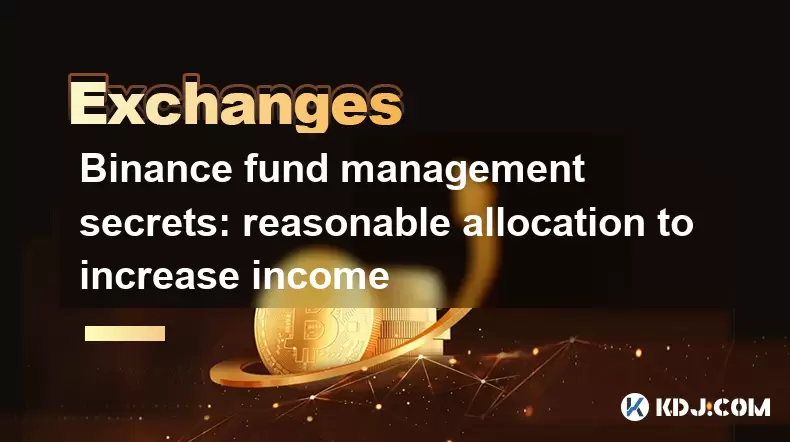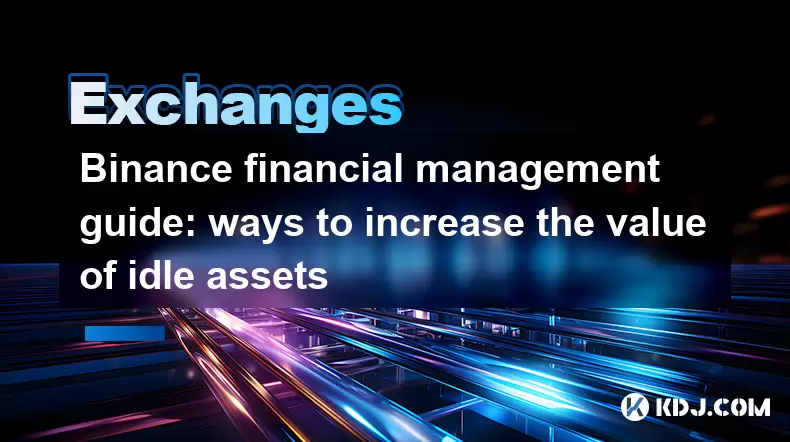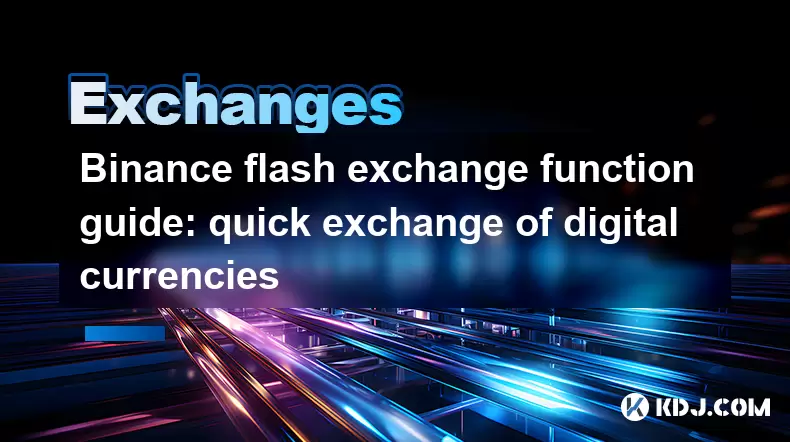-
 Bitcoin
Bitcoin $107,341.7259
0.15% -
 Ethereum
Ethereum $2,438.6204
0.70% -
 Tether USDt
Tether USDt $1.0003
-0.02% -
 XRP
XRP $2.1866
1.94% -
 BNB
BNB $649.0952
0.36% -
 Solana
Solana $150.9602
5.63% -
 USDC
USDC $0.9999
0.00% -
 TRON
TRON $0.2742
0.40% -
 Dogecoin
Dogecoin $0.1645
1.93% -
 Cardano
Cardano $0.5669
1.18% -
 Hyperliquid
Hyperliquid $37.8286
4.19% -
 Bitcoin Cash
Bitcoin Cash $491.4669
-2.74% -
 Sui
Sui $2.8150
3.06% -
 Chainlink
Chainlink $13.4184
2.91% -
 UNUS SED LEO
UNUS SED LEO $9.0809
0.27% -
 Avalanche
Avalanche $18.0295
2.60% -
 Stellar
Stellar $0.2396
1.19% -
 Toncoin
Toncoin $2.8587
0.13% -
 Shiba Inu
Shiba Inu $0.0...01160
2.59% -
 Litecoin
Litecoin $86.4192
1.45% -
 Hedera
Hedera $0.1486
1.19% -
 Monero
Monero $308.4324
0.87% -
 Polkadot
Polkadot $3.4202
1.43% -
 Bitget Token
Bitget Token $4.6436
-0.34% -
 Dai
Dai $0.9998
-0.02% -
 Ethena USDe
Ethena USDe $1.0002
0.00% -
 Uniswap
Uniswap $7.1527
3.29% -
 Pi
Pi $0.5357
-8.45% -
 Pepe
Pepe $0.0...09588
4.61% -
 Aave
Aave $259.9759
0.81%
What is Bybit's KYC certification process?
Bybit's KYC process verifies user identity to comply with AML and CTF regulations, ensuring a secure trading environment; levels of verification may vary by jurisdiction.
Apr 02, 2025 at 01:14 am

Bybit, like many other cryptocurrency exchanges, requires users to undergo a Know Your Customer (KYC) process to comply with international anti-money laundering (AML) and counter-terrorism financing (CTF) regulations. This process verifies user identity to prevent fraudulent activities and ensure a secure trading environment. The specific requirements and steps might vary slightly depending on your jurisdiction and account verification level.
Understanding Bybit's KYC Levels
Bybit typically employs a tiered KYC system, meaning the level of verification required increases with the amount of activity or funds involved. A basic level might require minimal information, while higher levels demand more extensive documentation. This is a standard practice across the industry to balance user convenience with regulatory compliance. Failure to complete the required KYC verification can limit your trading activities on the platform.
The Bybit KYC Process: A Step-by-Step Guide
The exact steps may change, so always refer to Bybit's official website for the most up-to-date instructions. However, the general process usually involves these steps:
Account Registration: First, you need to create a Bybit account. This typically involves providing a valid email address and choosing a secure password.
Initial Verification: After registration, you'll likely be prompted to provide basic information such as your full name, date of birth, and country of residence.
Identity Verification: This usually involves uploading a clear photo of a government-issued identification document, such as a passport, driver's license, or national ID card. Ensure the document is valid and clearly displays all necessary information.
Address Verification (Optional): Depending on your verification level, you might need to provide proof of your residential address. This could be a utility bill, bank statement, or other official document showing your current address.
Selfie Verification: In many cases, you'll need to take a selfie holding your identification document. This helps Bybit confirm that you are the actual owner of the document.
Review and Approval: Once you've submitted all the required documents, Bybit will review your application. The review time can vary, but it usually takes a few hours to a few days. You will receive a notification once your KYC process is complete.
Important Note: Always ensure the documents you upload are clear, legible, and valid. Incorrect or blurry images can delay the verification process.**
Understanding the Importance of KYC Compliance
KYC procedures are essential for maintaining the integrity and security of the cryptocurrency ecosystem. They help prevent illicit activities such as money laundering, terrorist financing, and fraud. By complying with KYC regulations, Bybit aims to create a safer and more trustworthy platform for all its users. Failure to comply can result in account suspension or closure.
Dealing with KYC Rejection
If your KYC application is rejected, Bybit will usually provide a reason for the rejection. Common reasons include blurry or illegible documents, incorrect information, or documents that don't meet the required standards. In such cases, you should carefully review the feedback and resubmit your application with corrected documents. Contacting Bybit's customer support for assistance is also recommended.
Different KYC Levels and Their Implications
The level of KYC verification required can influence the features and services available to you on Bybit. A higher verification level might allow you to access higher withdrawal limits, participate in specific trading activities, or use certain advanced features. Conversely, a lower verification level might restrict your access to some functionalities. This is a common practice among cryptocurrency exchanges to mitigate risk and comply with regulatory requirements.
Security Measures During KYC
Bybit employs robust security measures to protect your personal information during the KYC process. They utilize encryption and other security protocols to ensure the confidentiality and integrity of your data. However, it's crucial to be vigilant and avoid sharing your login credentials or sensitive information with unauthorized individuals.
Timeframes for KYC Verification
The time it takes for Bybit to complete your KYC verification can vary depending on several factors, including the volume of applications they are processing, the completeness and accuracy of your submitted documents, and the complexity of your application. While it might be completed within a few hours, it could take several days in some cases. Patience is key during this process.
What if I encounter problems during the KYC process?
If you encounter any issues during the KYC process, Bybit provides customer support channels to assist you. You can usually find contact information on their official website. Clearly explaining your problem and providing any relevant details will help them resolve your issue efficiently. Remember to be patient and persistent in seeking assistance.
Frequently Asked Questions
Q: What types of identification documents does Bybit accept?
A: Bybit generally accepts government-issued identification documents such as passports, driver's licenses, and national identity cards. Specific requirements might vary depending on your region.
Q: How long does the KYC verification process take?
A: The verification process typically takes a few hours to a few days, but it can vary depending on several factors.
Q: What happens if my KYC application is rejected?
A: If rejected, Bybit will usually provide a reason. You should correct the errors and resubmit your application. Contacting customer support is also recommended.
Q: Is my information safe during the KYC process?
A: Bybit uses security measures to protect your information, but it's crucial to be vigilant and avoid sharing sensitive data unnecessarily.
Q: What are the different levels of KYC verification?
A: Bybit may have tiered KYC levels, with higher levels granting access to more features and higher withdrawal limits. The specific levels and requirements are detailed on their platform.
Q: Can I trade on Bybit before completing KYC?
A: Usually, there are limitations on trading or withdrawals until KYC is complete. The specific restrictions are outlined by Bybit.
Disclaimer:info@kdj.com
The information provided is not trading advice. kdj.com does not assume any responsibility for any investments made based on the information provided in this article. Cryptocurrencies are highly volatile and it is highly recommended that you invest with caution after thorough research!
If you believe that the content used on this website infringes your copyright, please contact us immediately (info@kdj.com) and we will delete it promptly.
- Kitten Craze Online: Hunting for the Purr-fect Coin Purse
- 2025-06-29 10:30:12
- Pudgy Penguins Soar to 3-Month High Amidst PENGU ETF Buzz!
- 2025-06-29 10:30:12
- AI Agents, Token Role, and Capitalization: Navigating the Web3 Frontier
- 2025-06-29 10:50:11
- Avalanche Price Forecast: Grayscale Boost Signals Potential Rally to $50?
- 2025-06-29 10:50:11
- Khazan's Getting a Facelift: Balance Changes and Freebies Galore!
- 2025-06-29 11:10:12
- Wall Street's Crypto Rival Battle: Saylor vs. Chanos and the Meme Coin Mania
- 2025-06-29 11:10:12
Related knowledge

Binance spot market analysis: seize the best time to buy and sell
Jun 19,2025 at 04:56pm
Understanding the Binance Spot MarketThe Binance spot market is one of the most popular platforms for cryptocurrency trading globally. It allows users to trade digital assets at current market prices, making it essential for traders aiming to buy low and sell high. Unlike futures or margin trading, spot trading involves direct ownership of the asset aft...

Binance fund management secrets: reasonable allocation to increase income
Jun 22,2025 at 02:29pm
Understanding Binance Fund ManagementBinance fund management involves strategic allocation of your cryptocurrency assets to optimize returns while managing risk. The key to successful fund management lies in understanding how different investment options on the Binance platform can be utilized to create a diversified portfolio. This includes spot tradin...

Binance trading pair selection skills: find the best buying and selling combination
Jun 23,2025 at 02:49am
Understanding the Basics of Trading Pairs on BinanceBefore diving into trading pair selection skills, it's essential to understand what a trading pair is. On Binance, a trading pair refers to two cryptocurrencies that can be traded against each other. For example, BTC/USDT means Bitcoin is being traded against Tether. Each trading pair has its own liqui...

Binance new coin mining strategy: participate in Launchpool to earn income
Jun 23,2025 at 11:56am
What is Binance Launchpool and how does it work?Binance Launchpool is a feature introduced by the world’s largest cryptocurrency exchange, Binance, to allow users to earn new tokens through staking. This platform enables users to stake their existing cryptocurrencies (such as BNB, BUSD, or other supported assets) in exchange for newly launched tokens. T...

Binance financial management guide: ways to increase the value of idle assets
Jun 19,2025 at 11:22pm
Understanding Idle Assets in the Cryptocurrency SpaceIn the fast-paced world of cryptocurrency, idle assets refer to digital currencies that are not actively being used for trading, staking, or yield farming. Holding these funds in a wallet without utilizing them means missing out on potential growth opportunities. Binance, as one of the leading platfor...

Binance flash exchange function guide: quick exchange of digital currencies
Jun 23,2025 at 12:29pm
What is the Binance Flash Exchange Function?The Binance Flash Exchange function is a powerful tool designed to allow users to instantly swap between supported cryptocurrencies without the need for placing traditional buy/sell orders. This feature simplifies the trading process by offering a direct exchange mechanism, eliminating the requirement to conve...

Binance spot market analysis: seize the best time to buy and sell
Jun 19,2025 at 04:56pm
Understanding the Binance Spot MarketThe Binance spot market is one of the most popular platforms for cryptocurrency trading globally. It allows users to trade digital assets at current market prices, making it essential for traders aiming to buy low and sell high. Unlike futures or margin trading, spot trading involves direct ownership of the asset aft...

Binance fund management secrets: reasonable allocation to increase income
Jun 22,2025 at 02:29pm
Understanding Binance Fund ManagementBinance fund management involves strategic allocation of your cryptocurrency assets to optimize returns while managing risk. The key to successful fund management lies in understanding how different investment options on the Binance platform can be utilized to create a diversified portfolio. This includes spot tradin...

Binance trading pair selection skills: find the best buying and selling combination
Jun 23,2025 at 02:49am
Understanding the Basics of Trading Pairs on BinanceBefore diving into trading pair selection skills, it's essential to understand what a trading pair is. On Binance, a trading pair refers to two cryptocurrencies that can be traded against each other. For example, BTC/USDT means Bitcoin is being traded against Tether. Each trading pair has its own liqui...

Binance new coin mining strategy: participate in Launchpool to earn income
Jun 23,2025 at 11:56am
What is Binance Launchpool and how does it work?Binance Launchpool is a feature introduced by the world’s largest cryptocurrency exchange, Binance, to allow users to earn new tokens through staking. This platform enables users to stake their existing cryptocurrencies (such as BNB, BUSD, or other supported assets) in exchange for newly launched tokens. T...

Binance financial management guide: ways to increase the value of idle assets
Jun 19,2025 at 11:22pm
Understanding Idle Assets in the Cryptocurrency SpaceIn the fast-paced world of cryptocurrency, idle assets refer to digital currencies that are not actively being used for trading, staking, or yield farming. Holding these funds in a wallet without utilizing them means missing out on potential growth opportunities. Binance, as one of the leading platfor...

Binance flash exchange function guide: quick exchange of digital currencies
Jun 23,2025 at 12:29pm
What is the Binance Flash Exchange Function?The Binance Flash Exchange function is a powerful tool designed to allow users to instantly swap between supported cryptocurrencies without the need for placing traditional buy/sell orders. This feature simplifies the trading process by offering a direct exchange mechanism, eliminating the requirement to conve...
See all articles

























































































